Setting the Table
Curated together with Abel Hartooni and Sjoerd Beijers
Who gets to sit at the table? Who sets it, and who clears it away? The table has long been a place where decisions are made, where food is shared, and where stories unfold. Yet access to this space has never been equal. Setting the Table begins from this ambivalence, proposing the table not as a static piece of furniture but as an infrastructure for relation, an object that can include, exclude, or be reimagined as a tool for commoning.
Alongside the Western dining table and its histories of hierarchy and privilege, the programme turns to the Sufra—a piece of cloth laid on the floor for communal meals, practiced in different forms from the Balkans to Bengal and beyond. Unlike the rigid formality of the dining table, the Sufra suggests a sense of horizontality, flexibility, and communality that is both practical and symbolic. It is not solely spread for eating, but has become tied to spiritual, ceremonial and magical practices. Here, the Sufra becomes not only a surface where food and stories are shared, but a shifting landscape of encounters, celebrating differences and gaps. It extends beyond its material form into an infrastructure for relation, exchange, and imagination.
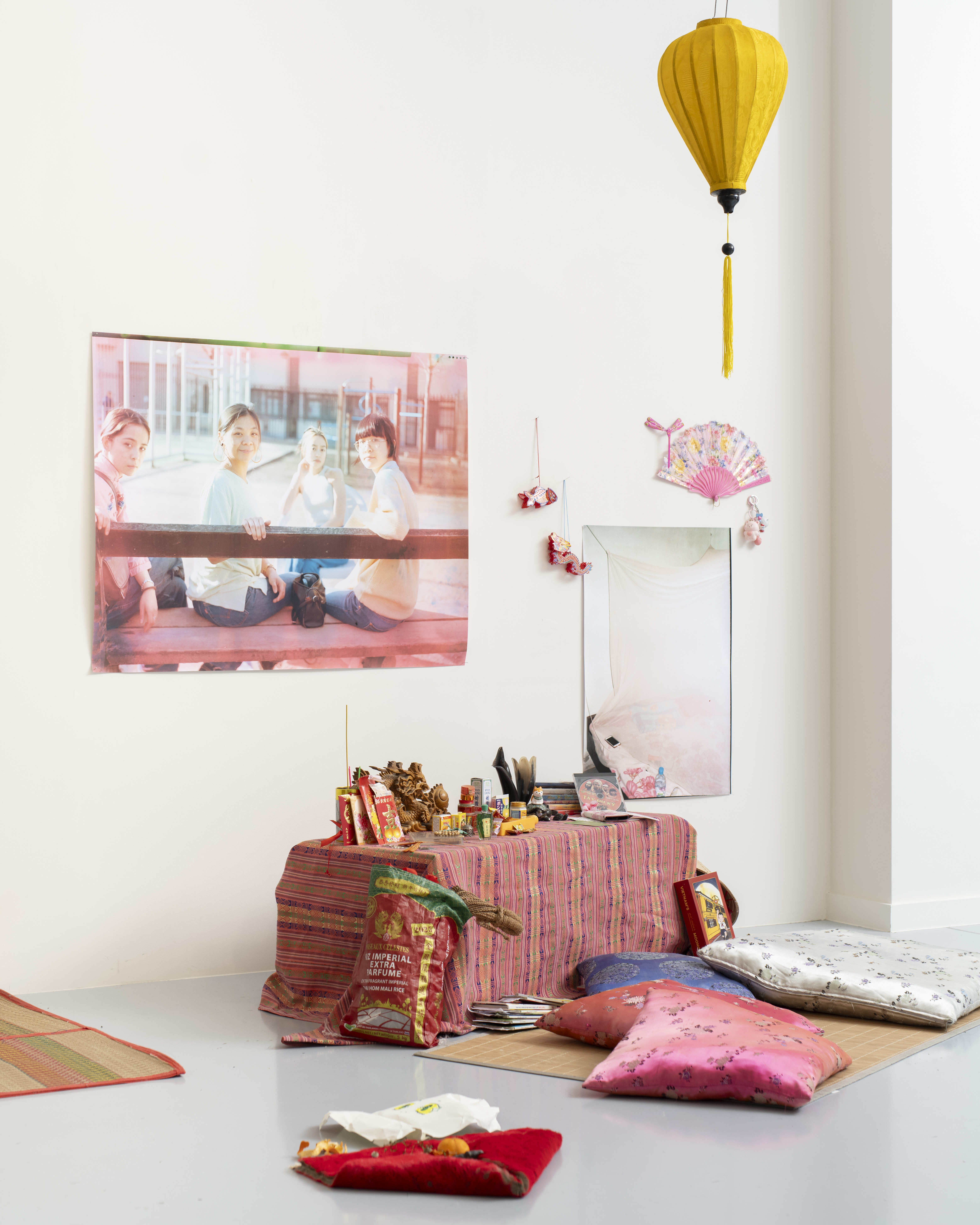
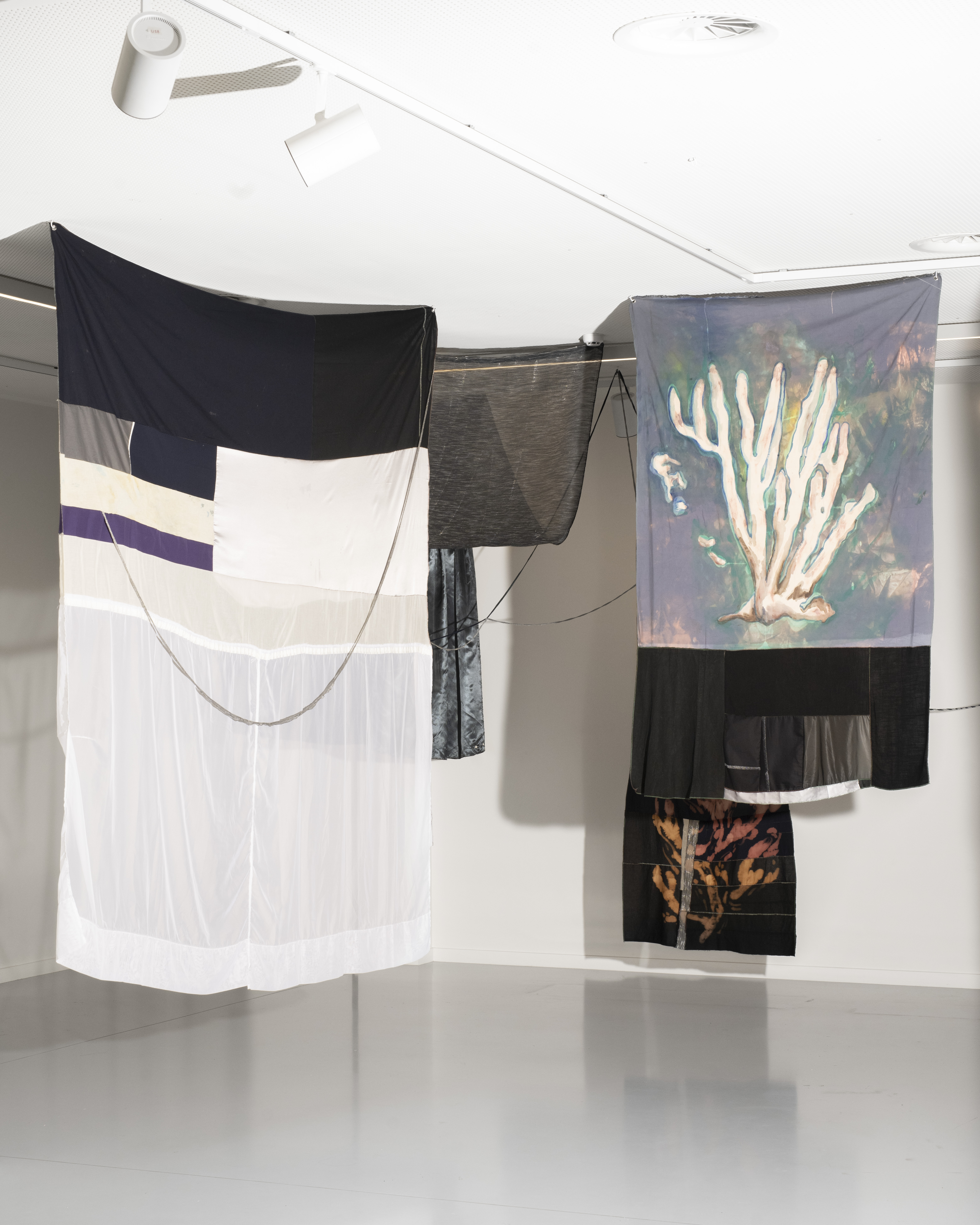
The invited collectives and artists engage with this through their own practices of archiving, storytelling, and making. Tashattot’s film POPG CLANC revisits a WhatsApp group first created by online gamers, which transformed during the compounded crises of Lebanon into something much more: a revolutionary cell, an information hub, a mutual aid network, and an emotional lifeline. The film is an act of collective archiving, but also of collective self-reflection, raising questions about how solidarity forms, how it sustains itself, and how it falters under pressure.
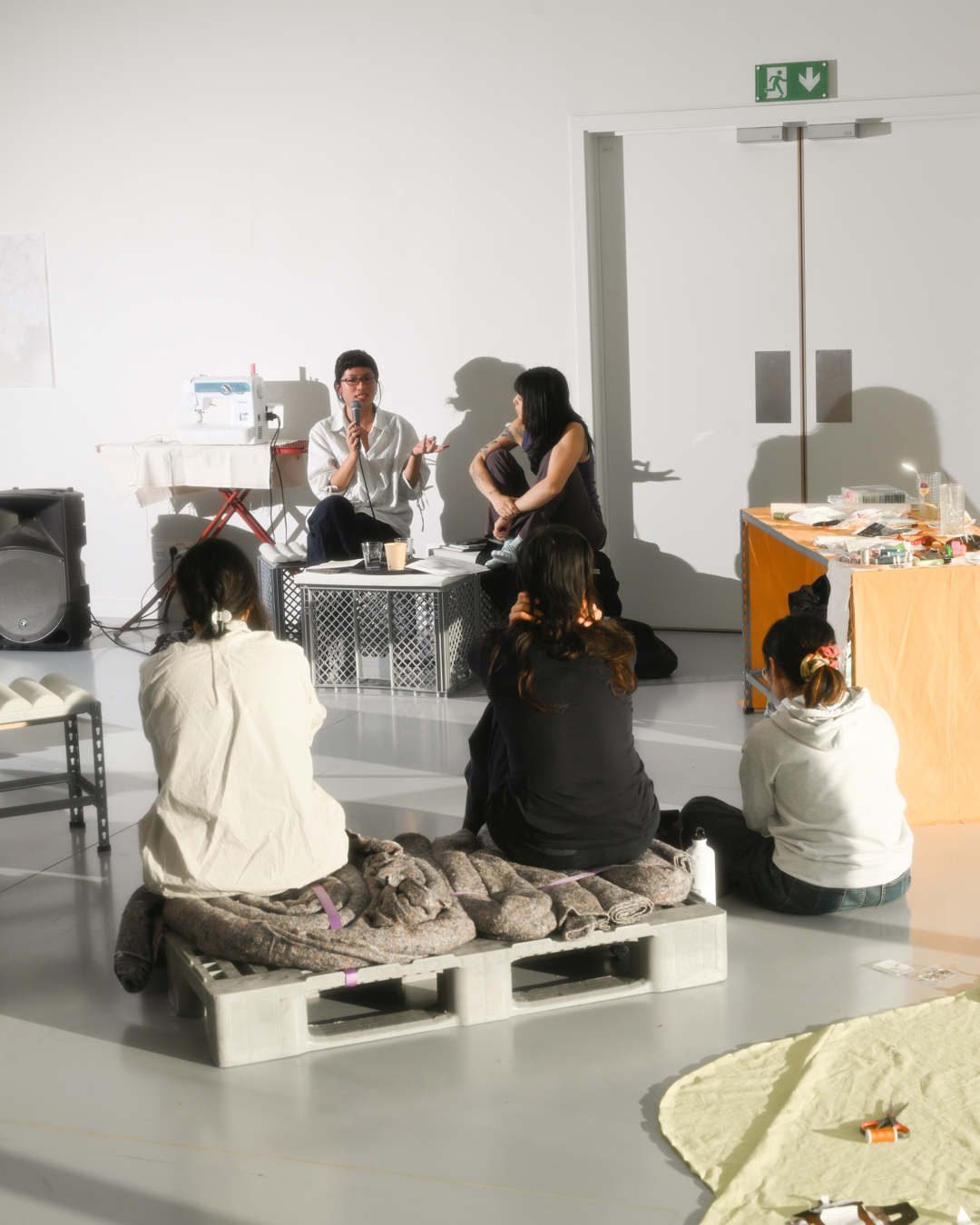


This dispersed and unstable form of collectivity resonates with Pushing Hands, who bring together mapping archives, video, photography, textiles, and food in a collective installation. Their work invites audiences to handle documents, leaf through memories, share mantou buns, or witness carpets unfolding across the floor. Each gesture foregrounds relationality—less about finished objects, more about traces of encounters, processes of gathering, and the care embedded in collective work.
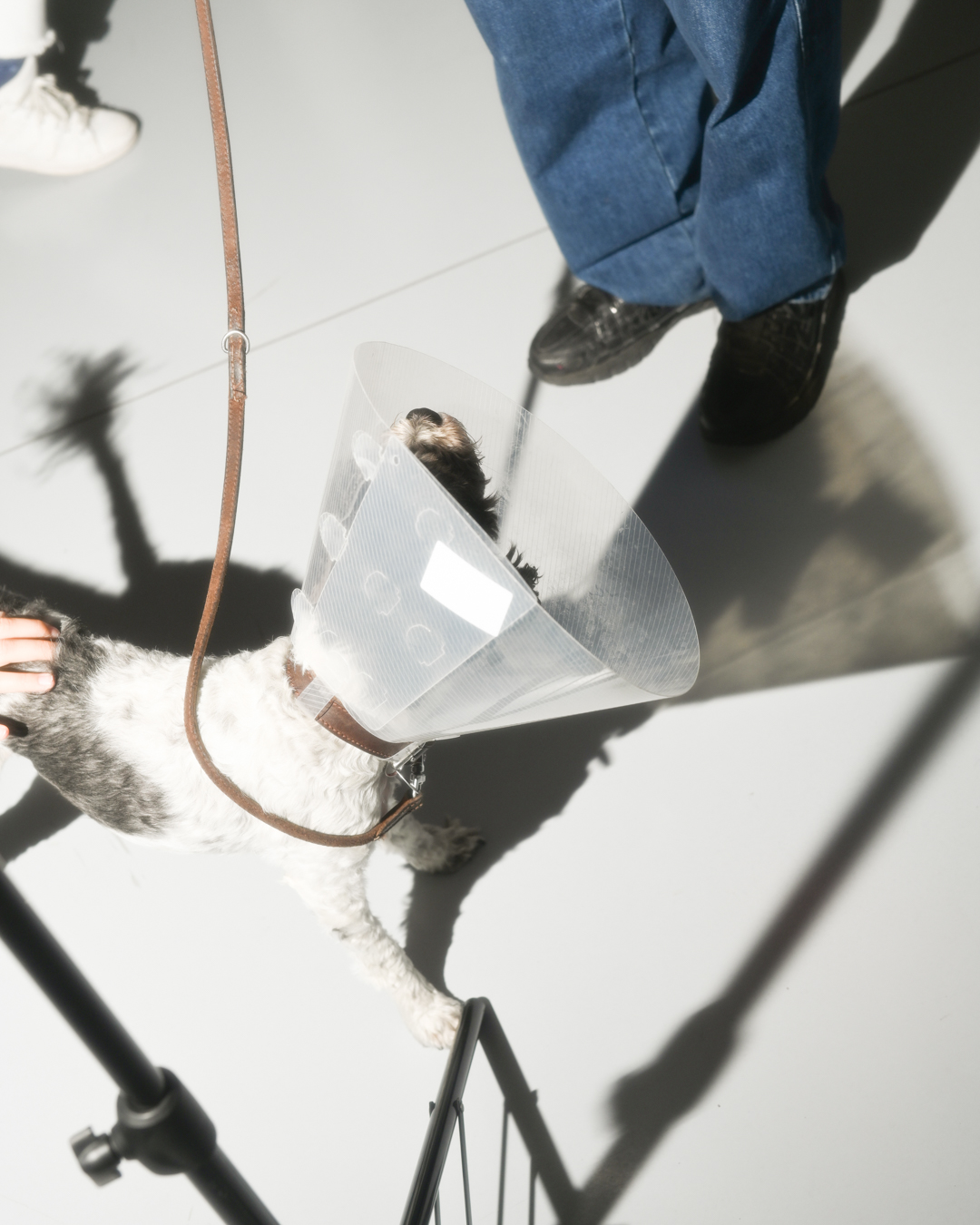
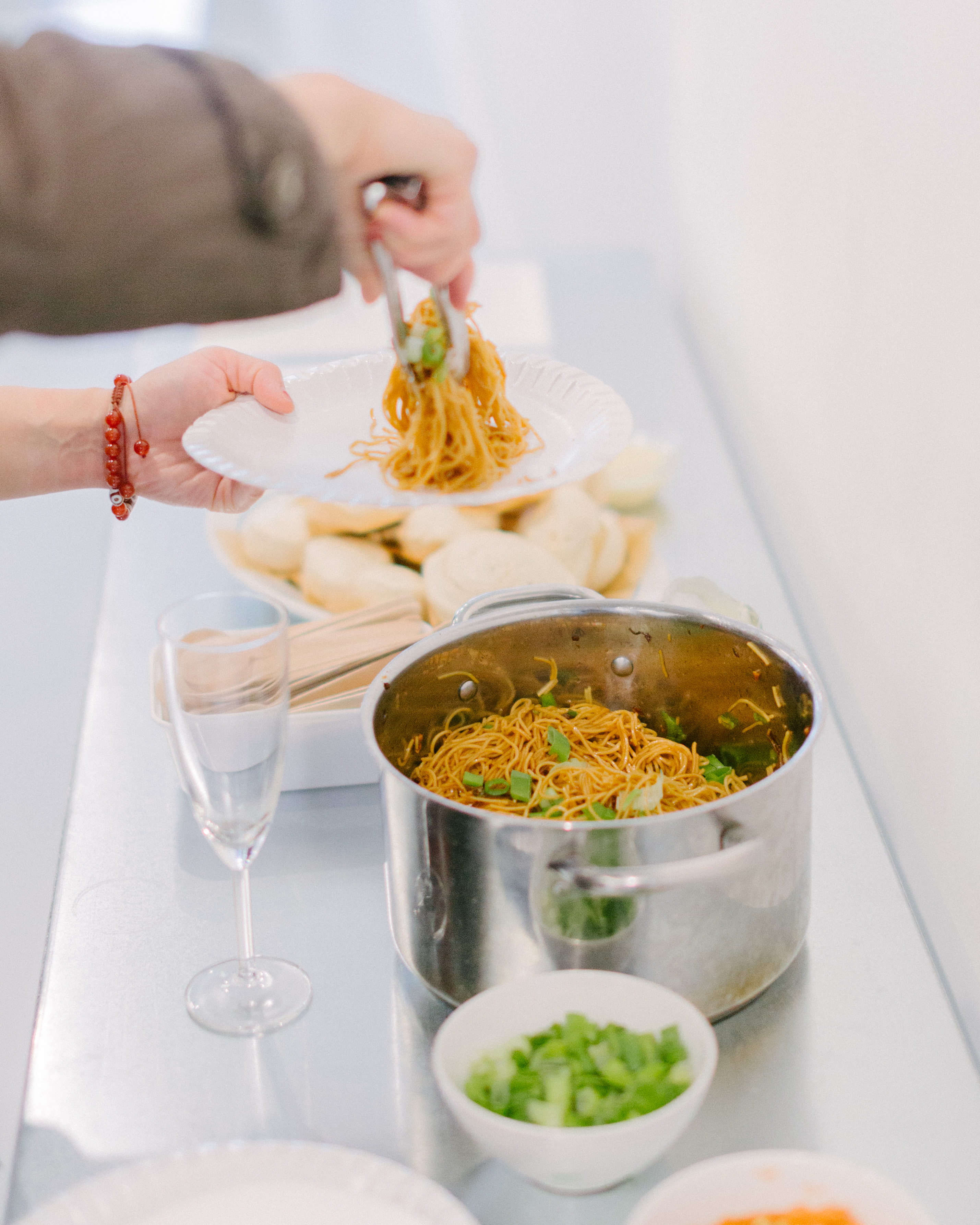

Lou Cocody-Valentino extends this sensibility through woven assemblages of recycled plastics, printed fabrics, painted wood, and yarns. Drawing on her upbringing in Martinique and her experience of living across multiple cultural geographies, she creates intimate material compositions that resemble poetic archipelagos—fragmented yet connected, echoing themes of memory and identity.
Shif–t* proposes a modular design that can be reconfigured and activated in different gatherings. Rooted in kinship and transformation, their practice envisions forms that stay open to change, echoing Ursula K. Le Guin’s gesture of “shif” as a space of flux and relation. Their contribution acts as a framework for communal presence—flexible, responsive, and polyphonic.


What ties these works together is not a single object but a multiplicity of gatherings—laid out on cloth, embedded in digital platforms, stretched across textiles, activated through food. Each expands the question of how we meet one another, how we share, and how we sustain a common space while holding space for difference. As Édouard Glissant reminds us, relation is not about assimilation but about allowing opacity to exist between us.
Photography credits go to Marit Galle, Clair Bravo & Johan Poezevara
For Some Time I’ve Been Standing
Curated together with Bethan Burnside, Daphné Charitos, Tuta Chkheidze, Maartje Claes, Gustav-Adam Dendooven, Hanna Julia Erdosi, Abel Hartooni, Emilia Naomi Keller, Yasemin Köker, Temitayo Olalekan, Miranda Pastor, Arthur Saint Remy, Marie Cathérine Stalpaert, Nina Turina, Flora Vanclooster & Jean Watt
For Some Time I’ve Been Standing is an exhibition curated by Curatorial Studies 2024-2025 participants that takes place at the Old House at Kunsthal Gent. Bringing together works by Chupan Atashi, Manon de Boer, Michael Kleine, Brigitte Louter, a workshop by Emma Ydiers and a performance by Astrid Specht Seeberg, the exhibition sets out to trace gestures of rehearsal, repetition, and return, exploring what it means to pause, to stand still, or to remain in motion.
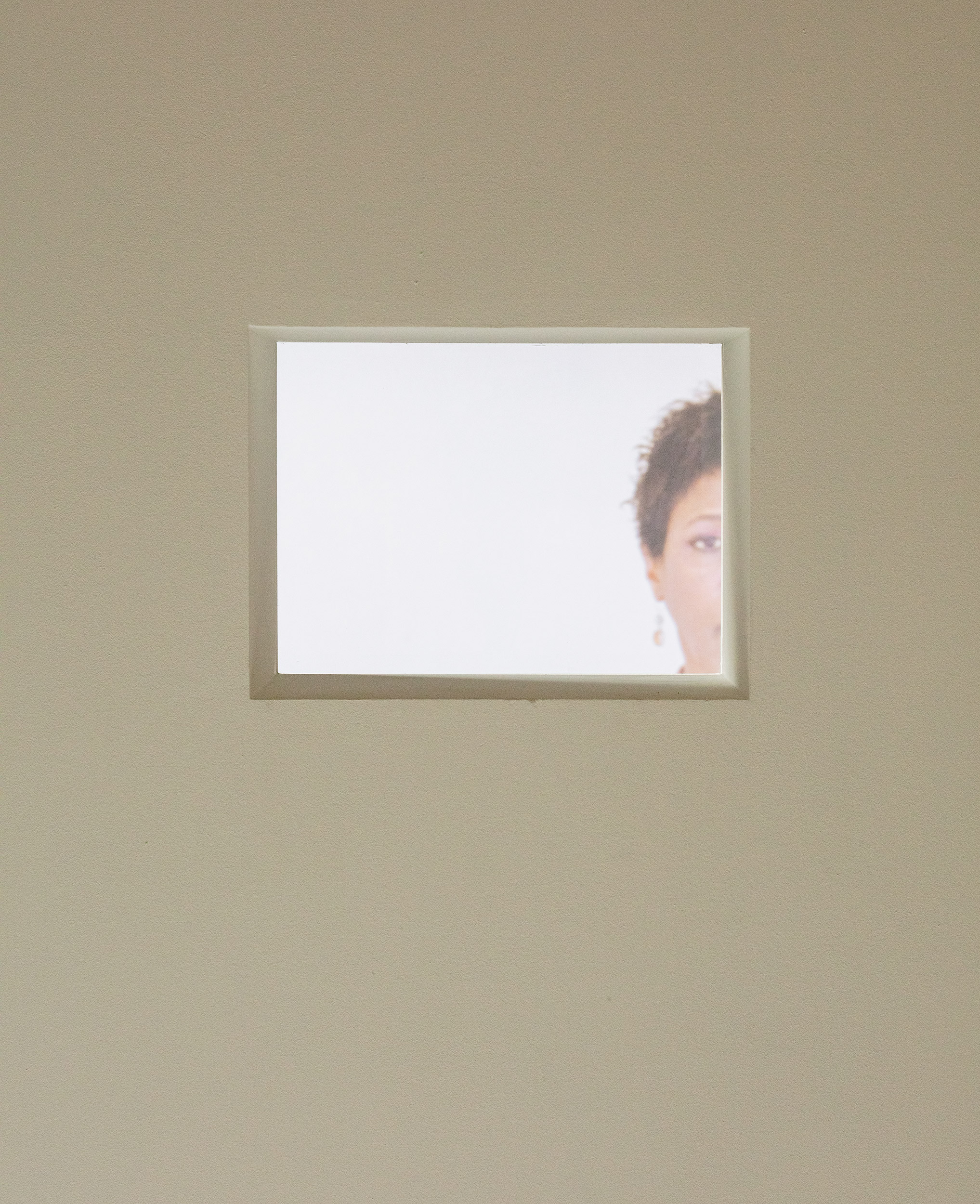

By entering into dialogue with the fresco on the back wall of the Old House, the artworks reiterate its significance as a palimpsest— responding to, echoing and reimagining it. Immediately drawing the gaze, the fresco tends to direct a body’s movement in the space. Between the other white walls, it attracts the eye, inviting it to wander over its worn, bodily surface, to follow the contours of the gaps and cracks, to glide over the smooth areas and to acknowledge its most vulnerable parts.

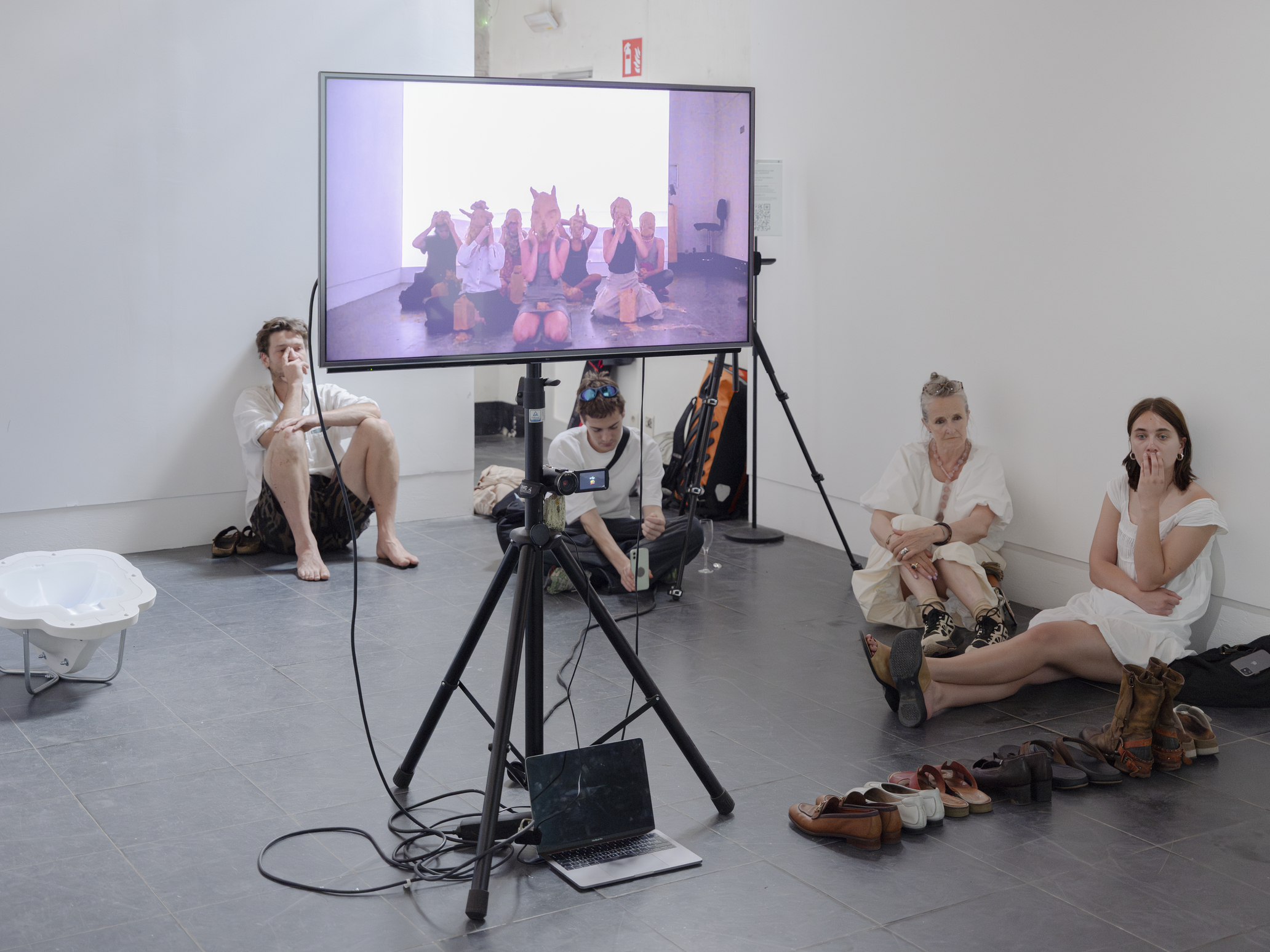
The exhibition takes its title from a passage in Kathy Acker’s 1993 novel My Mother: Demonology, “For some time I’ve been standing, in front of a white stucco wall, on a white road that is raised above all the surroundings and the dirt underneath, as though it’s a platform. All around me are masses of luggage, suitcases and bags”. Integral to Acker’s writing is the process of rewriting and reinterpreting, often plagiarising other sources as her own. This reflects the impetus of the exhibition to enter into conversation with the fresco on the back wall of the Old House, reiterating its significance as a palimpsest with artworks that respond, echo, and reimagine.
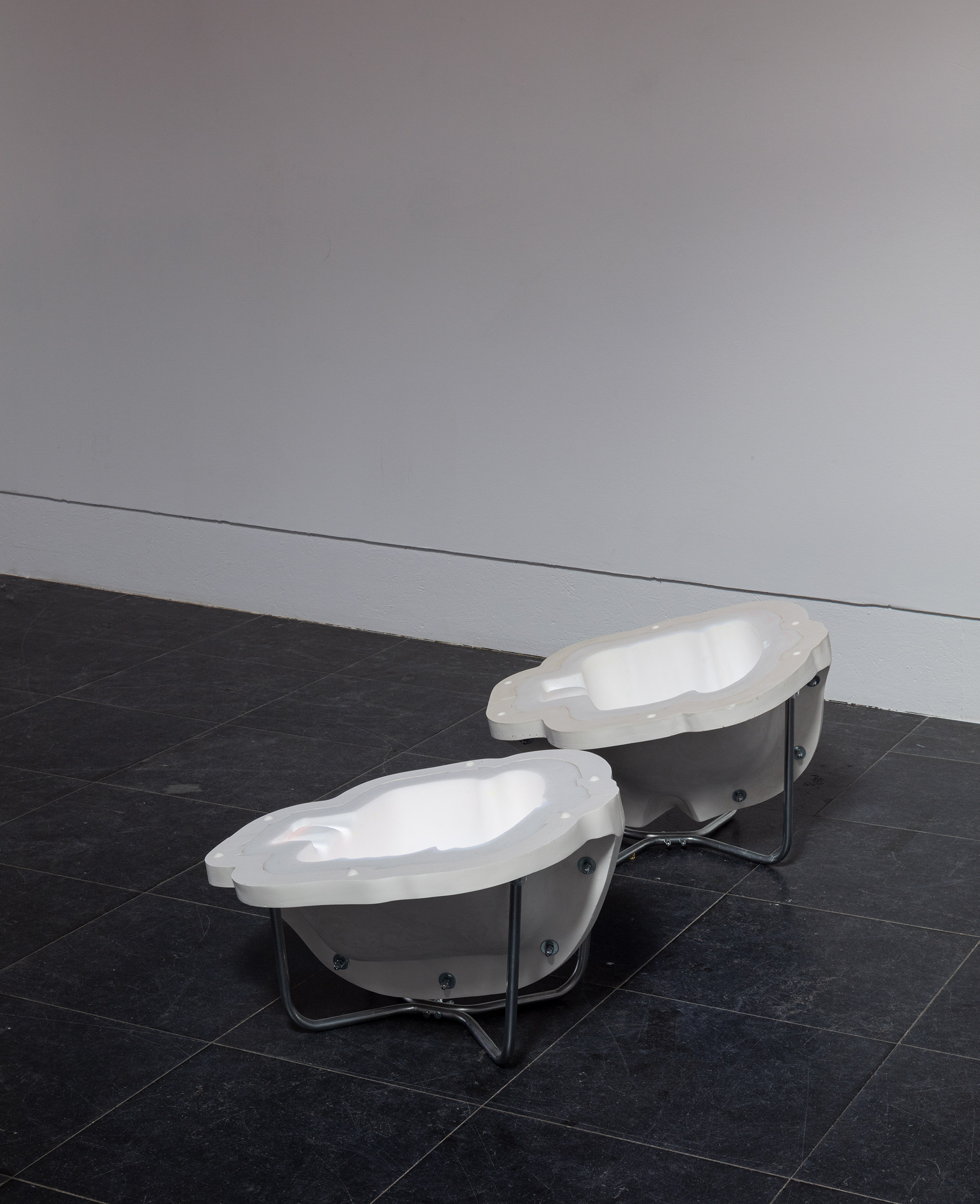

The public program consists of a workshop by Emma Ydiers by the name of ‘Relating to Lesbian Archives’, which reflects on the ongoing erasure of queer narratives and the potential of archiving as an activist method; and a performance by Astrid Specht Seeberg by the name of ‘Clayplay’, which was developed through a series of performances in various environments. Under the guidance of the artist, a group of participants from the audience gradually builds clay masks in a blind improvisation, struggling with the tangible weight of the material.
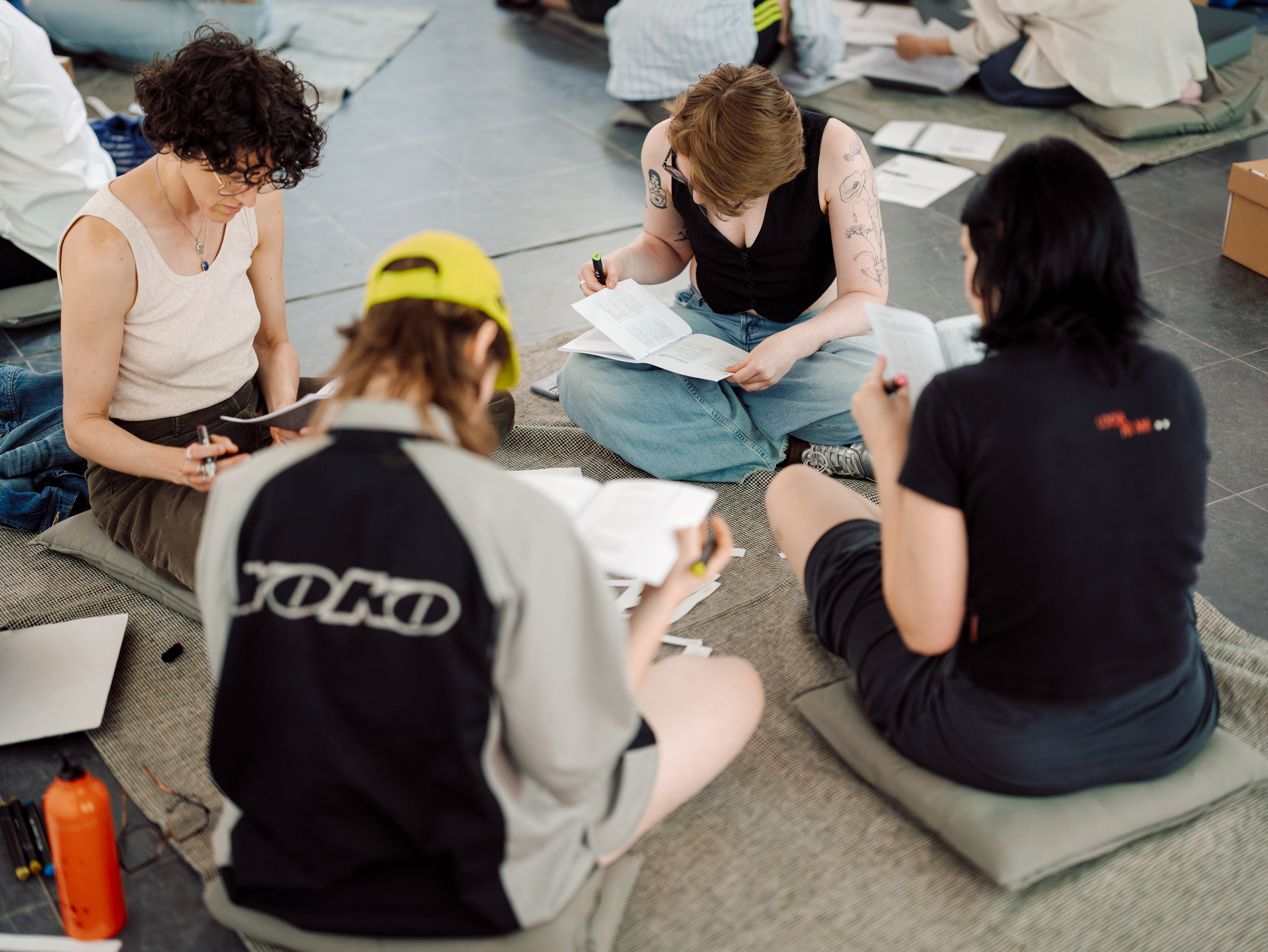

The exhibition is realised in a collaboration between Curatorial Studies KASK and Kunsthal Gent as part of the graduation project within the professionalization trajectory.
Photography credits go to Michiel De Cleene, Isaac Ponseele & Lukas Neve
Eye Becomes Water
Curated together with Daphné Charitos, Jean Watt, Yasemin Köker, Abel Hartooni & Temitayo Olalekan
Eye Becomes Water is an exhibition programme which explores waiting as its conceptual starting point. A series of four exhibitions with accompanying public programmes will be hosted from mid-February 2025 to the end of June 2025.
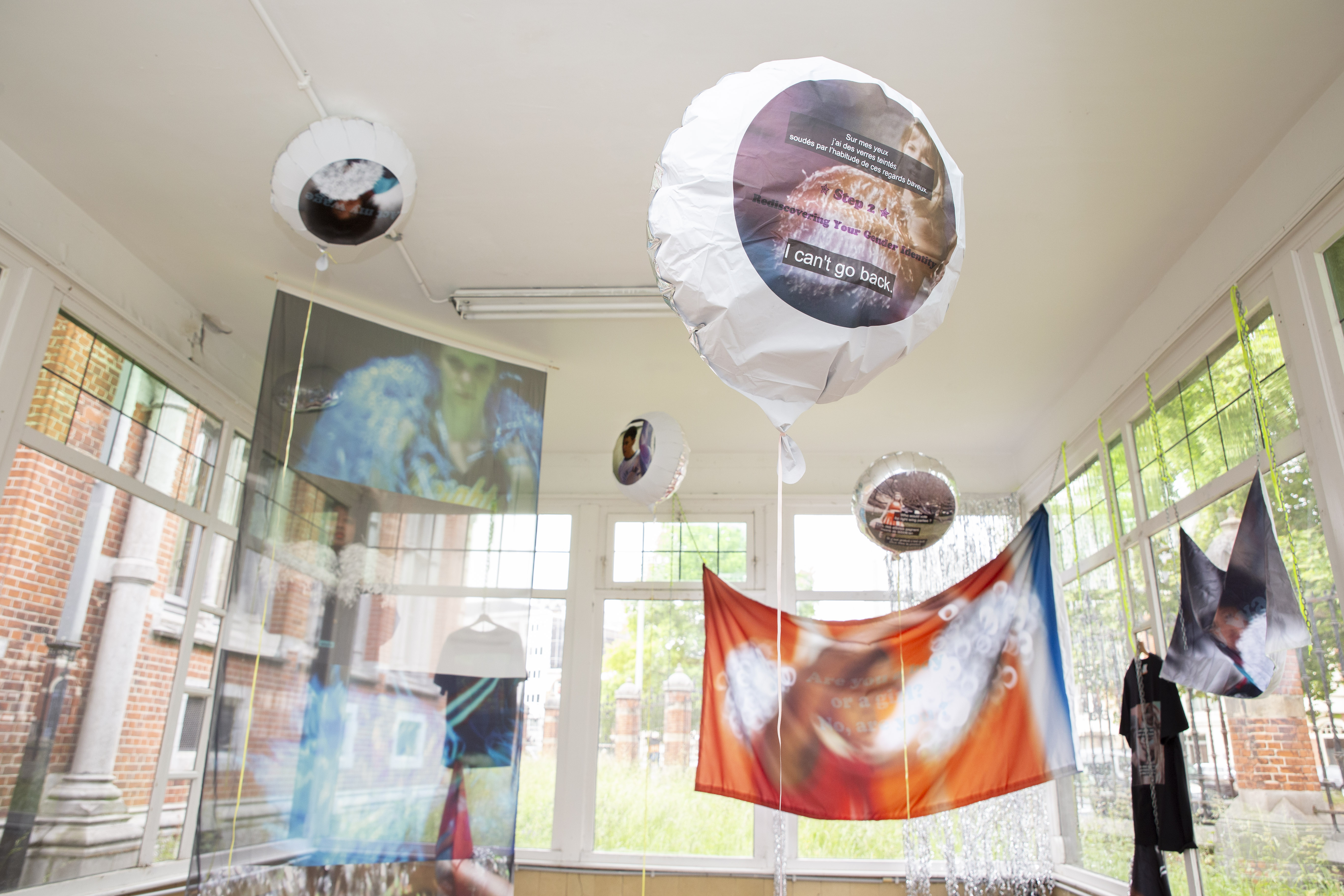
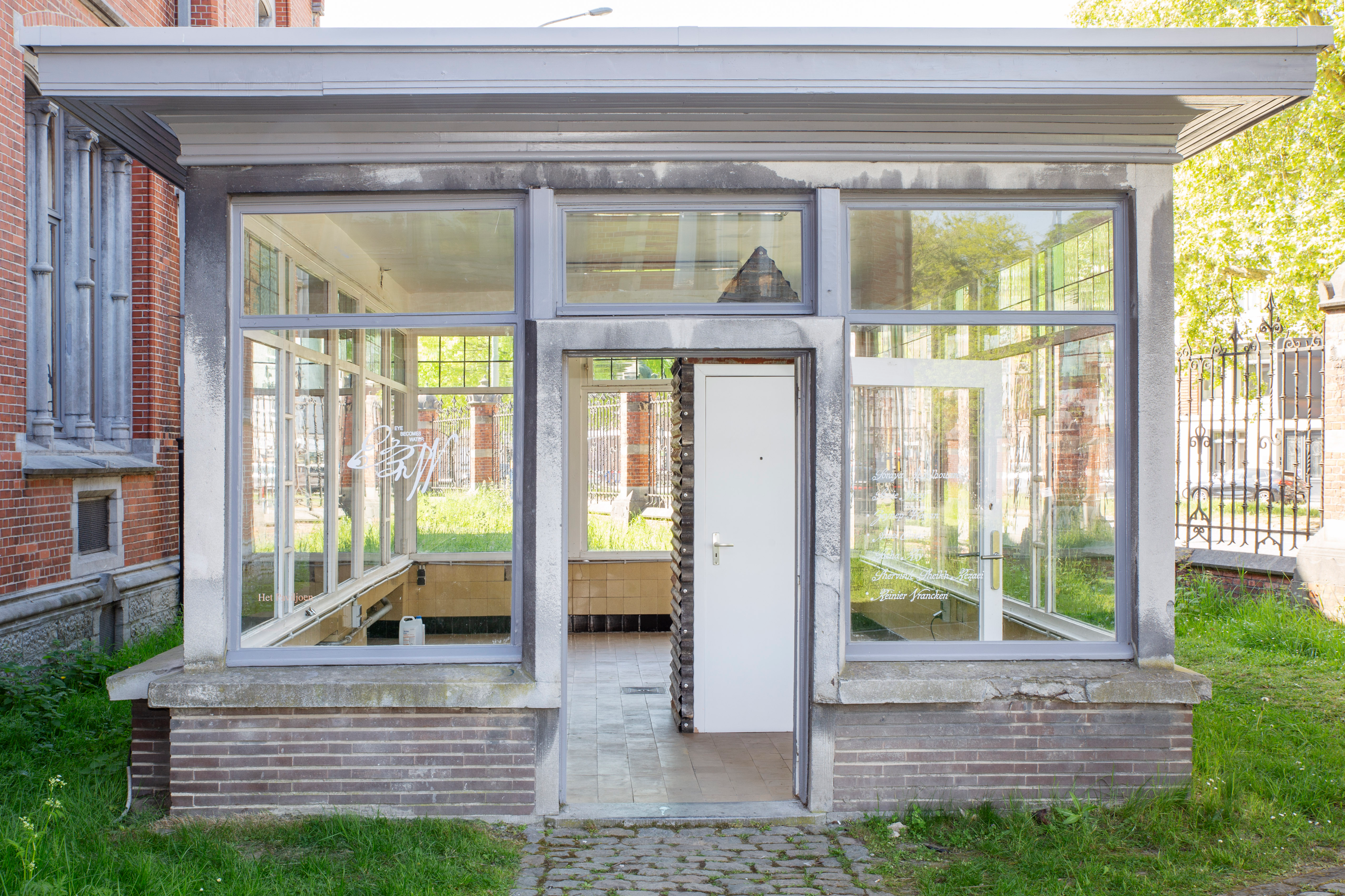
The exhibition programme draws from Het Paviljoen’s history – one that has primarily passed down through oral storytelling and void of archival documentation. This void allows for speculative practices of/in the space. The position, and the action, of waiting, form the broad conceptual framework to guide artistic responses to the exhibition space. Waiting is of subjective multitudes – it is a mode of alertness to our surroundings, it is a practice of care for others, it is a revolutionary act of resilience against ongoing struggles, it is inflected with issues of gender, race, class, and location.


The programme featured works by the artists Sanie Irsay, with her video intervention titled ‘24h Swan Lake’, accompanied by a hearing session event by Radio Svitlo as part of the public programme; a duo show by Shervin/e Sheikh Rezaei & Soraya Abdelhouaret titled ‘Crying Could be a Solvent’, which explored the notion of alchemy in relation to waiting; a trio show by Zeynep Kayan, Amel Omar & Reinier Vrancken titled ‘the slab of outlaw time’, reffering to the tension and boundaries between exterior and interior, the outer shell and inner fullness; and a solo show by Sacha Rey titled ‘But I’m a Cheerleader’ which explores the challenges for equitable conditions in the creative arts.

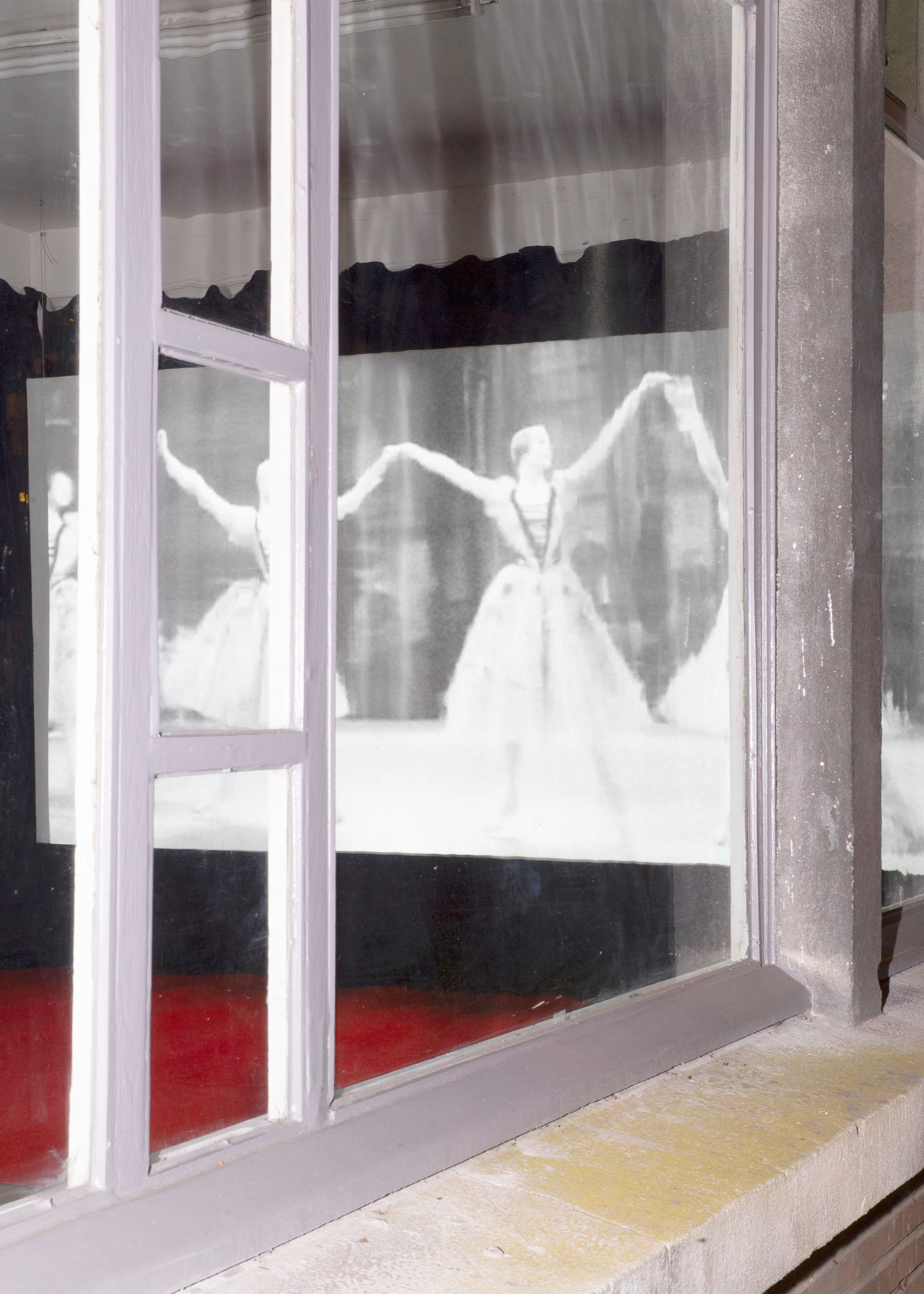
Photography credits go to Charlotte Daniëlse
Driedee: Hatching from Scratch
Curated together with Abel Hartooni and Temitayo Olalekan
“Hatching from scratch” is an exhibition with works by 28 artists, whose practices reflect and re-articulate what three dimensionality encompasses today. Thinking through the body, the territory and the imaginary, these artists place us on a course with a variety of conceptual openings – which unfold in the exhibition space in a perpetual engagement with each other on questions regarding friction and subjective transformation.


The exhibition proposes the metaphor of an itch as a provocation. The scratch, a resistance to this discomfort, conveyed through the artists' material experimentation, activates their intimated impressions. What emerges from this dynamic interplay is the hatching – an opening which reshapes how the artists perceive, interact with, and inhabit concurrent multidimensional spaces.


The works in this exhibition address the body and its sensorial attachments to memory, ecological fragility, language and speculatory crossroads. Through multisensory and spatial approaches, the artists engage the audience in navigating foyers of imagination and inquiry, thus provoking conversation and other practices of seeing, sensing, and hatching – engaging us to start it all from scratch.


This exhibition gathers work by the following 28 artists: Eloïse Baele, Nele Bergmans, Fedora Boonaert, Fenn-Jonah Brookhuis, Eveline Bumba, María Burguera, Manoah Camporini, Ann De Nys, Irene Donatini, Elise El Yousfi, Dodi Espinosa, Janina Fritz, Yawen Fu, Alexis Gerlach, Luna Ireland, Lore Jacobs, Irma Janssens, Mara Jenny, Lennert Lefever, Nicolas Peeters, Dieuwke Raymaekers, Lieve Shukrani Simoens, Elisa Van Coster, Emile Van Helleputte, Eva van Tongeren, Rosa Westhaus, Ugo Woatzi and Indra Wouters.
The exhibition is realised in a collaboration between Kunstwerkt, Curatorial Studies at the Royal Academy of Fine Arts in Ghent and Kunsthal Mechelen.
Photography credits go to Lavinia Wout